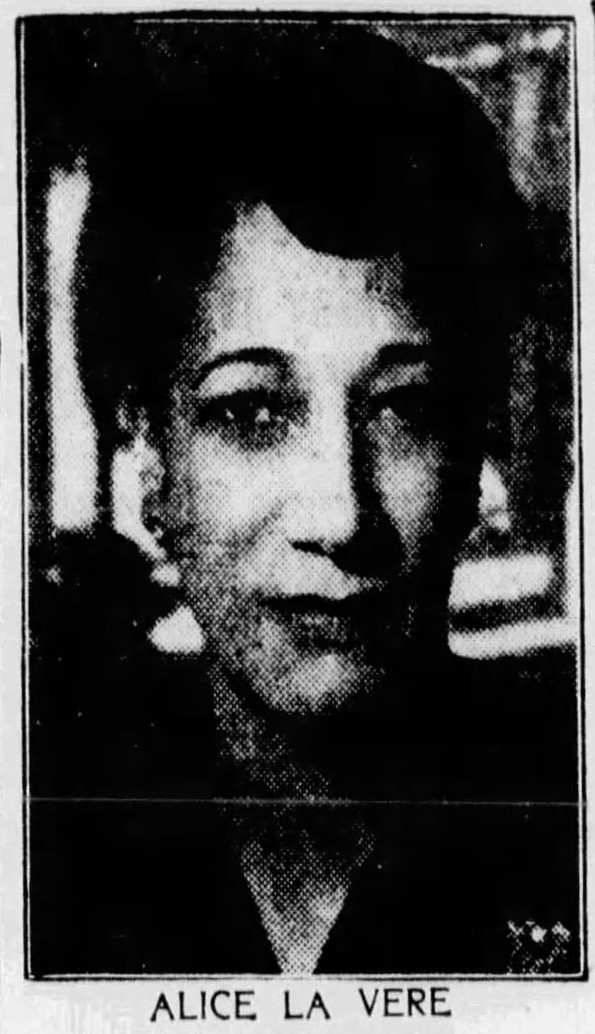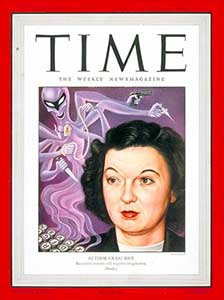Elizabeth Short’s murder dominated the front pages of the Evening Herald & Express for days following the discovery of her body.

Even in a murder case as well-publicized as the Black Dahlia, the more time that elapses following the crime, the fewer clues there are on which to report. That the case was going cold didn’t dampen the Herald’s enthusiastic coverage. The paper sought psychiatrists, psychologists, and mystery writers who would attempt, each in his/her own way, to analyze the case and fill column space in the paper as they, and the cops, waited for a break. Decades before the founding of FBI’s Behavioral Analysis Unit (BAU), shrinks and writers whose work appeared in the Herald engaged in speculative profiles of both the victim and her killer.
The Herald tapped Beverly Hills psychologist, Alice La Vere, to contribute her analysis of the victim and slayer. The paper introduced La Vere as “… one of the nation’s most noted consulting psychologists.” La Vere regularly spoke to various organizations about the problems of returning veterans. According to the newspaper, Miss La Vere would give readers, “an analysis of the motives which led to the torture murder of beautiful 22-year-old Elizabeth Short”. La Vere’s analysis is remarkably contemporary.

Here is an excerpt from her profile of Short’s personality:
“Some gnawing feeling of inadequacy was eating at the mind of this girl. She needed constant proof to herself that she was important to someone and demonstrates this need by the number of suitors and admirers with which she surrounded herself.”
La Vere described the killer.
“It is very likely that this is the first time this boy has committed any crime. It is also likely that he may be a maladjusted veteran. The lack of social responsibility experienced by soldiers, their conversational obsession with sex, their nerves keyed to battle pitch — these factors are crime-breeding.” She further stated: “Repression of the sex impulse accompanied by environmental maladjustment is the slayer’s probable background.”
How does La Vere’s profile of Elizabeth Short and her killer compare with the analysis of retired FBI profiler John Douglas? Douglas suggests Beth was “needy” and that her killer would have “spotted her a mile away.” He said that the killer “would have been a lust killer and loved hurting people.”

On the salient points, I’d say that La Vere and Douglas were of like minds regarding Elizabeth Short and her killer.
At the time of Elizabeth Short’s murder, mystery writer Craig Rice (pseudonym of Georgiana Ann Randolph Walker Craig) was one of the most popular crime writers in the country. In its January 28, 1946 issue, TIME magazine selected Rice for a cover feature on the mystery genre. Sadly, Rice is largely forgotten by all except the most avid mystery geeks (like me).

In late January 1947, the Herald invited Craig Rice to give her take on the Black Dahlia case. She summed it up this way:
“A black dahlia is what expert gardeners call ‘an impossibility’ of nature. Perhaps that is why lovely, tragic Elizabeth Short was tortured, murdered, and mutilated because such a crime could happen only in the half-world in which she lived. A world of—shadows.”
The police couldn’t catch a break. Not only couldn’t they locate the crime scene, false confessors, male and female, diverted critical resources and muddied the waters.
NEXT TIME: FALSE CONFESSORS

Most unsolved crimes were/ARE committed by MK\’d assassins who were/are \’groomed\’ by the \’authorities\’.
We can agree to disagree on this, Russ. But I appreciate your point of view.